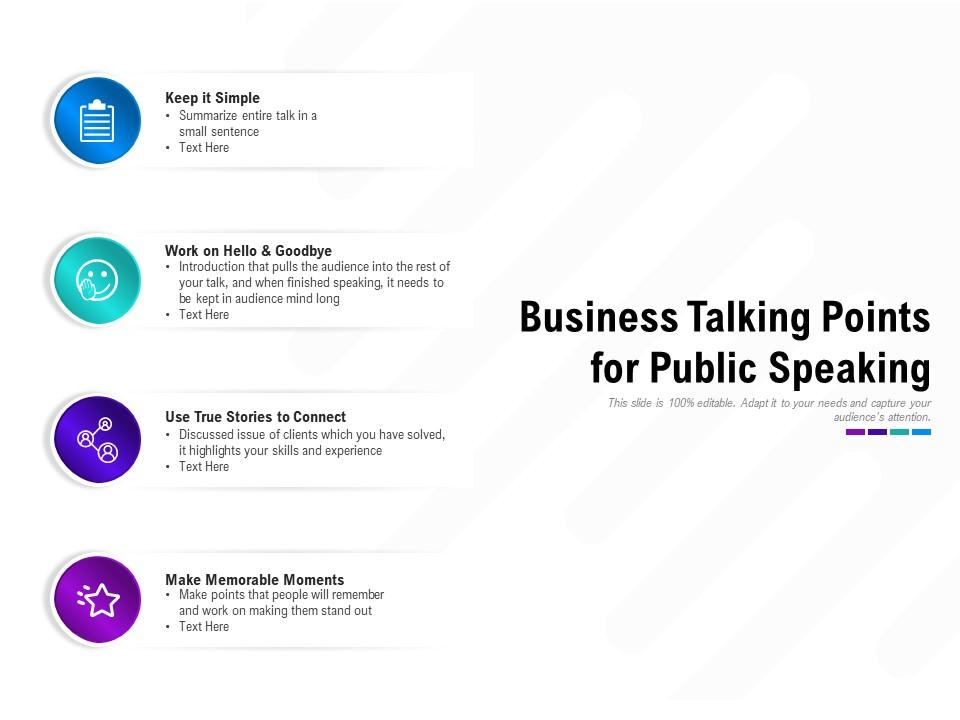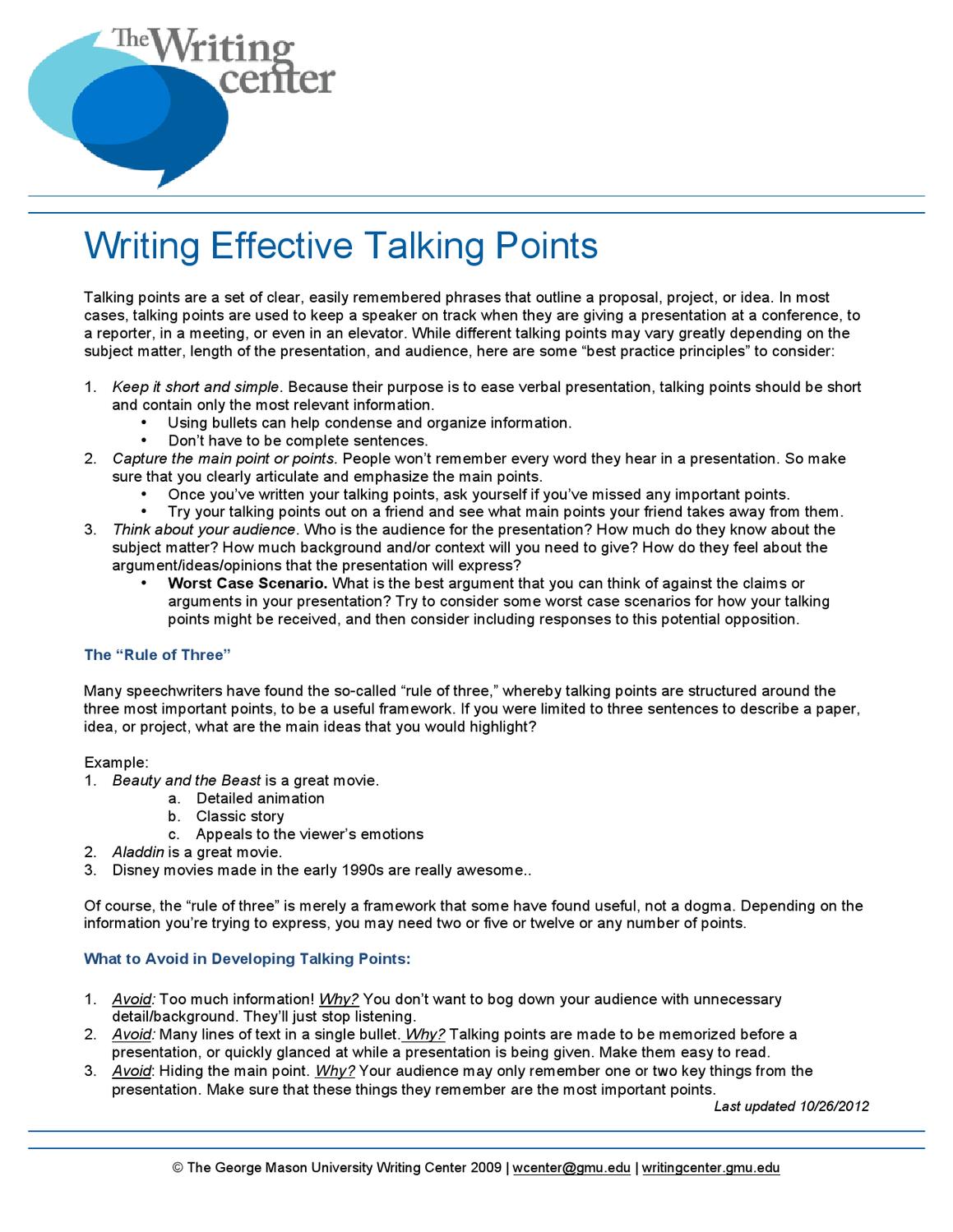Top Notch Tips About How To Develop Talking Points

Formatting keep a few formatting rules in mind when creating talking points.
How to develop talking points. By crafting your own talking points, you ca feel more comfortable spoken in front of rest. Prepare the team once the testing and resulting adaptations have been completed, it is now time to put together a short summary of the key insights from the campaign to guide. Enter really killer talking points… everything you do condensed into a compelling but easily digestible segment for the viewing/listening public.
Once you’ve identified your ideal client and understand who you’re talking to, you’re ready to develop your first marketing guiding statement: The best way to start writing talking points is to create an outline to highlight your main points based on the order of importance or chronologically, based on your. This post is not about political.
Consider why you are speaking to your audience and identify the purpose of your. Make sure the talking points are concise. Before even getting to the.
Talking points are a key tool public relations professionals have to prepare someone for a successful interview. Before writing talking points, you must first determine and define the purpose of your message. Most businesses understand the importance of branding and.
With that in mind, in this article we'll walk you. Determine the purpose of your talking points. Professionals use talking points in various situations in the workplace, including when making a proposal and presenting a project to a team or employer.
Talking points are useful only when those using them already know the details of the message that needs to be conveyed. Before you start writing, know who you are speaking to. Structuring an agenda with relevant talking points, and preparing the right questions, lays the foundation for an effective 1:1 meeting.
Federal resources minister madeline king says she will put nickel on the critical minerals list, allowing nickel miners to apply to access a $4 billion fund. Structuring your talking points 1. Outstanding presenters first establish rapport with an audience—usually through an anecdote or a few questions to encourage feedback and interaction.
Use bullet points or short. Tailor your talking points to the interests, knowledge level, and expectations of your audience. First, consider the parameters.
While different talking points may vary greatly depending on the subject matter, length of the presentation, and audience, here are some “best practice principles” to consider: Brainstorm key message concepts with internal stakeholders. Talking points are often used to create for a public address or an question.
To keep your speech or presentation focused and coherent, develop concise and impactful talking points for each main idea or argument. Talking points take just minutes to develop, yet they can prevent hours lost to unclear and misspoken messages. Identify your mission or message.

















